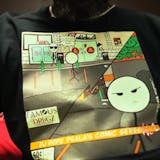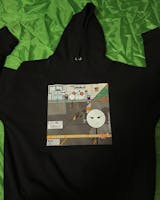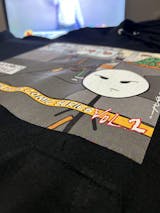Nanotechnology is important in the development of DTF printing methods. Nanotechnology means the study of matter on an atomic scale, that is, on a very small scale. The use of nanotechnology in DTF printing technology enables the development of scientifically advanced and diverse products by increasing print quality and durability. DTF printing helps develop inks by providing homogeneous distributions within nanotechnology. Ink quality is required for prints to be of high quality. For this purpose, it is possible to increase the quality of the inks with parts that will improve the quality and homogeneous distributions. In order to obtain high resolution prints, it is necessary to benefit from nanotechnology.
The use of mechanical and chemical nanotechnology increases the strength of the prints. Nanotechnology is used to make DTF prints on textile group products, ensuring a long life of the products. In order to put an end to the problem of washing and abrasion, the quality of dtf prints is quite high in the nanotechnology method. The properties of coatings, which are among the various advantages of using nanotechnology, also enable obtaining useful results. Working with nanotechnology in DTF technology, waterproof, anti-breakage and fading prints provide a very high quality print.
The Importance of Nanotechnology in Dtf Printing
One of the most important issues in DTF printing is the quality and durability of the print. Providing quality inks and durable products for impenetrable and textile fabrics by utilizing non-no technology is important for DTF printing. Prints made for various usage areas also appeal to the medicine and medical clothing group within textiles. By using nanotechnological materials, sun protection properties can be transferred to clothing. This is important for sun-protective clothing and for special work. Following the development of technology, interactive clothing production and printing is achieved by incorporating digital elements with nanotechnology.
Among the printing methods, printing processes for a wide range of uses are carried out with nanotechnology. Nanotechnology is inspired by the advancing aspects of dtf printing and benefits from its innovations in line with today's technology. The use of nanotechnology in DTF printing processes makes customers' products more attractive and of higher quality. Realizing multifunctional printing and having various features on textile products make the products special. The products appeal to buyers not only with their aesthetic appearance but also with their functionality. Thanks to nanotechnology, printed products with high functional dimensions are specially prepared to meet many needs of customers. Customer demands are appropriately met with nanotechnological printing, each stage of which is carefully controlled.
Dtf Print Development
DTF printing improves from time to time in terms of product diversity and equipment diversity. An advanced printing process is possible, especially thanks to devices and printers that print in accordance with technology. With advancing technology, dtf prints can be designed on interactive clothing, on digital screens and with digital elements. Thereupon, quality and functionality as well as aesthetic appearance have come to the fore in prints designed with the nanotechnology method.
Thanks to nanotechnology, dtf prints have improved day by day, allowing the production of high quality prints and highly functional clothing. Implementing prints designed by taking advantage of the opportunities provided by technology helps meet the needs of customers. In addition, thanks to textile products with different functional features, the clothing and textile industry develops and makes innovative progress. The renewed industrial world offers different opportunities to its users and thus contributes to the development of companies. Along with customer satisfaction, the industrial sector continues its development by stepping into innovations and meets the needs of customers.








